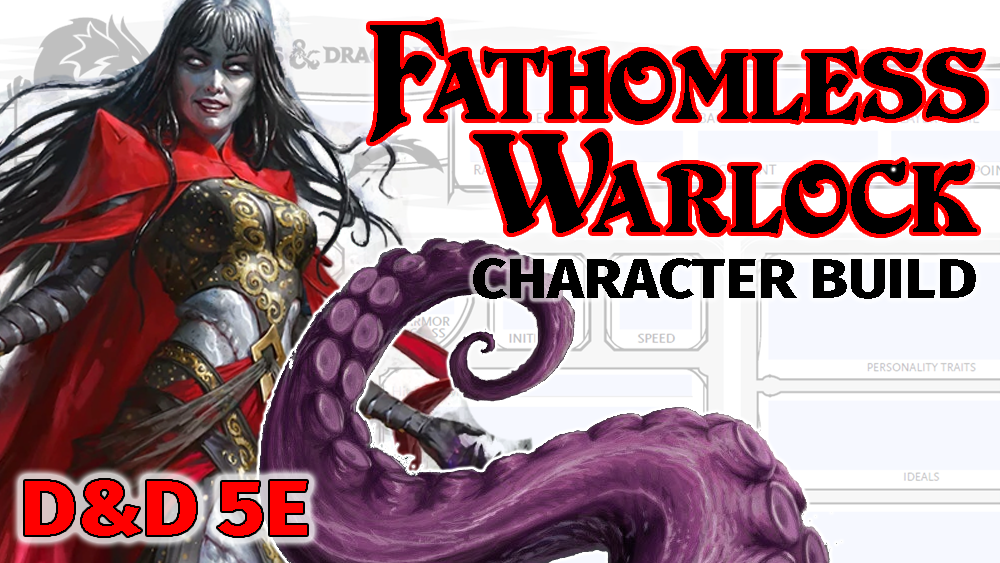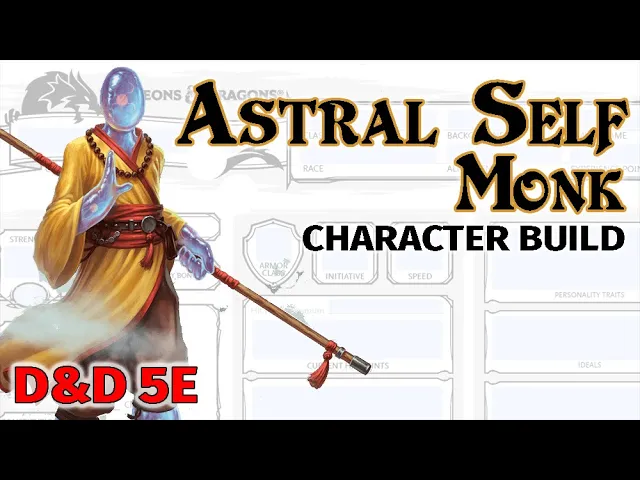The Dungeons and Dragons™ character build your DM does not want you to see! Haha, okay, maybe a bit extreme. But today’s TRIPLE Multiclass 5E character build is a master trapsmith and puzzle solver, the Dungeon Delver 5E build!
Our character is be a master of finding traps, removing traps, detecting secret passageways, and solving puzzles. We will exploit the optional rules in Tasha’s Cauldron of Everything to garnish seven different tool proficiencies and use these tools, along with our skills and spells, to be the craftiest and most intuitive dungeon explorer!
The Hill Dwarf is the best Dungeon Delver
Did you know that the Hill Dwarf is the ultimate Dungeon Delver / Explorer? Choosing a Dwarf here is one of our most important selections for this build. We will be using the optional rules in Tasha’s Cauldron of Everything we are able to manipulate the weapon proficiencies and turn them into tool proficiencies.
For this character build, we will be picking the Hill Dwarf as our race. This hinges on our DM allowing us to use the optional rules in Tasha’s Cauldron of Everything. As a Dungeon Master myself, I have seen zero evidence that gives me any reason to not allow players to use the new rules in Tasha’s Cauldron to build their character, so I hope your DM feels the same way. So, let’s go forth with this unique explorer build!
For our ability scores, they can be diversified as follows with the Point Buy system:
- STR 8
- DEX 16 (15 with +1 Dwarf Increase)
- CON 12
- INT 17 (15 with +2 Dwarf Increase)
- WIS 13 (important for Multiclassing)
- STR 8
- CHA 8
While I’m not terribly excited about dumping TWO ability scores, I think that we should be in our DM’s ear about our desire to seek out and find a pair of Gauntlets of Ogre Power. Having strength to move heavy objects and things of that nature would be beneficial, but not necessary for a dungeon delver as I assume we have a fellow party member that specializes in brute strength.
As a Hill Dwarf, we get Darkvision out to 60 feet. Darkvision is an absolute necessity for the serious underground explorer although we must remember that our vision in dark areas will be in shades of grey. Having torches or access to the light cantrip will be necessary. Especially when it comes to puzzles that include color schemes.
A lot of traps can consist of Poison darts or Poison Gas. Not to mention if we decide to drink something that we didn’t realize was poison. As a Dwarf we get the ability Dwarven Resilience. This gives us advantage on Saving Throws against poison and we have resistance to Poison damage.
Dwarves have an ability called Stonecunning. Whenever we make a History Check (INT) related to the origin of stonework we are considered proficient in the History skill and gain expertise, therefore doubling the proficiency on the skill check.
Now, here is where we will bend the rules of Tasha’s Cauldron of Everything in our favor. Dwarves have proficiency with the battleaxe, handaxe, light hammer and war hammer. These are four separate proficiencies. Using the replacement effect from the Tasha’s Cauldron supplement, we can replace each of these weapon proficiencies with a different weapon or a tool.
With this in mind, we will gain four Tool Proficiencies that will help us with die rolls when we encounter puzzles or traps. The tools I recommend are:
Honorable Mention: Glassblowers, Herbalism Kit (make healing potions)
Jeweler’s Tools
Training with jeweler’s tools includes the basic techniques needed to beautify gems. It also gives you expertise in identifying precious stones.
A lot of puzzles will incorporate gems. When we find gems, we can inspect them. Then, the Game Master can set a DC for us to be able to determine a gem’s history, use, purpose, or other identifying clues on whether or not they belong to a puzzle or other purpose.
Woodcarver’s Tools
Woodcarver’s tools allow you to craft intricate objects from wood, such as wooden tokens or arrows.
For puzzle reasons, much like the Jeweler’s Tools above, we could examine small wooden objects to gain insight on whether or not they serve a purpose or look like they belong to a set or are a piece to a larger puzzle. When we gain levels in Wizard later on, I like the idea of using Woodcarver’s Tools to craft magical wands to save spell slots that might have been used to detect magic or find secret passageways. Wands can become important tools for the dungeon delver!
For GMs wanting to allow their player’s character to craft wands, they should require material components (set by you), a spell that needs to be cast, and the engraving of arcane runes (using the woodcarver tools). And of course time, gold, and an Arcana check to complete the task.
Painter’s Supplies
Proficiency with painter’s supplies represents your ability to paint and draw. You also acquire an understanding of art history, which can aid you in examining works of art.
A lot of puzzles are created using paintings. With painters’ tools we should be able to get to add our proficiency bonus to our role when attempting to ascertain knowledge about a puzzle or trap that involves paintings or paint.
Components. Painter’s supplies include an easel, canvas, paints, brushes, charcoal sticks, and a palette.
Arcana, History, Religion. Your expertise aids you in uncovering lore of any sort that is attached to a work of art, such as the magical properties of a painting or the origins of a strange mural found in a dungeon.
Investigation, Perception. When you inspect a painting or a similar work of visual art, your knowledge of the practices behind creating it can grant you additional insight.
Painting and Drawing. As part of a short or long rest, you can produce a simple work of art. Although your work might lack precision, you can capture an image or a scene, or make a quick copy of a piece of art you saw.
Painter’s Supplies
Activity DC
Paint an accurate portrait 10
Create a painting with a hidden message 20
Carpenter’s Tools:
Carpenter’s Tools
Skill at carpentry enables a character to construct wooden structures. A carpenter can build a house, a shack, a wooden cabinet, or similar items.
Components. Carpenter’s tools include a saw, a hammer, nails, a hatchet, a square, a ruler, an adze, a plane, and a chisel.
History. This tool proficiency aids you in identifying the use and the origin of wooden buildings and other large wooden objects.
Investigation. You gain additional insight when inspecting areas within wooden structures, because you know tricks of construction that can conceal areas from discovery.
Perception. You can spot irregularities in wooden walls or floors, making it easier to find trap doors and secret passages.
Stealth. You can quickly assess the weak spots in a wooden floor, making it easier to avoid the places that creak and groan when they’re stepped on.
Fortify. With 1 minute of work and raw materials, you can make a door or window harder to force open. Increase the DC needed to open it by 5.
Temporary Shelter. As part of a long rest, you can construct a lean-to or a similar shelter to keep your group dry and in the shade for the duration of the rest. Because it was fashioned quickly from whatever wood was available, the shelter collapses 1d3 days after being assembled.
Carpenter’s Tools
Activity DC
Build a simple wooden structure 10
Design a complex wooden structure 15
Find a weak point in a wooden wall 15
Pry apart a door 20
As a Dwarf, we also get proficiency with our choice of Smith’s Tools, Brewer’s Supplies, or Mason’s Tools. Or, once again, we can exploit Tasha’s Cauldron to pick any tool we choose. No need to do that here, however, as Mason’s Tools will work just fine.
Mason’s Tools:
Mason’s Tools
Mason’s tools allow you to craft stone structures, including walls and buildings crafted from brick.
Components. Mason’s tools consist of a trowel, a hammer, a chisel, brushes, and a square.
History. Your expertise aids you in identifying a stone building’s date of construction and purpose, along with insight into who might have built it.
Investigation. You gain additional insight when inspecting areas within stone structures.
Perception. You can spot irregularities in stone walls or floors, making it easier to find trap doors and secret passages.
Demolition. Your knowledge of masonry allows you to spot weak points in brick walls. You deal double damage to such structures with your weapon attacks.
Mason’s Tools
Activity DC
Chisel a small hole in a stone wall 10
Find a weak point in a stone wall 15
Finally, as a Hill Dwarf, we get Dwarven Toughness. Increasing our maximum hit points by one for every level. We may take some damage if we fail at traps or puzzles so having extra hit points is wise.
Level 1 Rogue
We will be acquiring levels in Rogue for the first four levels. At level 1, we will need the Archaeologist background. This gives our character an Indiana Jones type of a feel and is thematic with our character build. It also gives us proficiency in the following:
History:
Survival:
Infernal:
Cartographer’s Tools:
Cartographer’s Tools
Using cartographer’s tools, you can create accurate maps to make travel easier for yourself and those who come after you. These maps can range from large-scale depictions of mountain ranges to diagrams that show the layout of a dungeon level.
Components. Cartographer’s tools consist of a quill, ink, parchment, a pair of compasses, calipers, and a ruler.
Arcana, History, Religion. You can use your knowledge of maps and locations to unearth more detailed information when you use these skills. For instance, you might spot hidden messages in a map, identify when the map was made to determine if geographical features have changed since then, and so forth.
Nature. Your familiarity with physical geography makes it easier for you to answer questions or solve issues relating to the terrain around you.
Survival. Your understanding of geography makes it easier to find paths to civilization, to predict areas where villages or towns might be found, and to avoid becoming lost. You have studied so many maps that common patterns, such as how trade routes evolve and where settlements arise in relation to geographic locations, are familiar to you.
Craft a Map. While traveling, you can draw a map as you go in addition to engaging in other activity.
Cartographer’s Tools
Activity DC
Determine a map’s age and origin 10
Estimate direction and distance to a landmark 15
Discern that a map is fake 15
Fill in a missing part of a map 20
Equipment
The 10′ Pole: The ultimate trap finder. All experienced dungeon delvers have a 10′ pole
Grappling Hook and 50′ of Rope: Being able to lower yourself into caverns or climb walls.
Hammer & Pitons: Secure your rope, provide pegs for climbing or seal something shut
Holy Water: a good test for evil. Spread it about and if it sizzles like bacon grease, the area could be evil
Chalk: Mark the walls in a maze to see if you are going in circles. Make notes to remember. Or, draw a line not to cross.
Dungeon Delver Build – D&D 5E
Four Levels of Rogue Arcane Trickster
The Rogue is the classic dungeon delver. Their ability to pick locks and remove traps has a well documented pass. In our Dungeons & Dragons™ 5E Dungeon Delver build, we are going to take the Rogue’s knack for traps one level higher by becoming an Arcane Trickster at 3rd Level.
At first level the Rogue gets four skill proficiencies and two of those proficiencies (or thieves tools) will gain Expertise (checks that allow us to double our proficiency bonus).
*EXPERTISE Thieves Tools: The best tool of the trade for a dungeon delver. Adds our proficiency bonus to rolls that are needed to pick locks and remove traps safely.
Thieves’ Tools
Perhaps the most common tools used by adventurers, thieves’ tools are designed for picking locks and foiling traps. Proficiency with the tools also grants you a general knowledge of traps and locks.
Components. Thieves’ tools include a small file, a set of lock picks, a small mirror mounted on a metal handle, a set of narrow-bladed scissors, and a pair of pliers.
History. Your knowledge of traps grants you insight when answering questions about locations that are renowned for their traps.
Investigation and Perception. You gain additional insight when looking for traps, because you have learned a variety of common signs that betray their presence.
Set a Trap. Just as you can disable traps, you can also set them. As part of a short rest, you can create a trap using items you have on hand. The total of your check becomes the DC for someone else’s attempt to discover or disable the trap. The trap deals damage appropriate to the materials used in crafting it (such as poison or a weapon) or damage equal to half the total of your check, whichever the DM deems appropriate.
Thieves’ Tools
Activity DC
Pick a lock Varies
Disable a trap Varies
*EXPERTISE Perception: The first step to thwarting traps is to find a trap. Finding Traps is done with Perception rolls or Passive Perception. This is the most important skill for our character build. Perception and Passive Perception can also be called upon for us to recognize hazards, approaching monsters or notice something strange about a puzzle or parts of the environment.
Investigation: How does a trap work? How does this item interact with a puzzle? This is where Investigation will be called upon.
Acrobatics: Navigating the natural hazards and terrain of a dungeon can be tough. Walking across chasms, pits, or jumping across stones in an acid pit can be dangerous areas where we do not want to fail. Acrobatics helps keep us on our toes.
Sleight of Hand: Removing a trap, quickly moving our hand out of the way before something clamps in place or requiring a steady hand to complete a part of a puzzle are valid reasons to make Sleight of Hand important to us.
At 3rd level, we are able to select are Roguish Archetype, the Arcane Trickster giving us one of our most powerful dungeon survival abilities in the game: Mage Hand Legerdemain.
Our cantrips
- Mage Hand: Per above, the Mage Hand Legerdemain is an insane ability for this build.
- Fire Bolt: Most character builds pick up fire bolt for the ranged spell attack in which I am sure we will use this feature in combat, sure. But, the main reason we will be getting this is the fire ability. Any flammable object hit by a fire bolt ignites if it isn’t being worn or carried. Exploration type uses could include: throwing a few fire bolts down a corridor covered in cobwebs or burning a rope bridge behind you so that no one follows behind.
- Prestidigitation: This spell has a multitude of creative uses such as creating a distraction with an odor or musical notes, lighting or extinguishing torches or campfires, warm your coffee in the morning, or marking items with a symbol. But perhaps the most important part is being able to clean (or soil) an object no larger than a cubic foot. Being able to clean up an item that you just dug up out of the ground by uttering a minor incantation will save a ton of time.
One Level of Knowledge Domain Cleric
Gaining insight about a dungeon temple, cavern, or crypt will be done through our skills. With knowledge cleric we pick up both History and Religion.
We also get access to Cantrips and spells that will continue to help us become a powerful master of traps and puzzles.
Five Levels of Transmutation Wizard
The next five levels will all be in Wizard. I chose Transmutation Wizard because the second level ability to transmute a cubic foot of stone, metal, wood, copper or silver into a different element could provide some interesting shenanigans. A simple example is a metal padlock. Using our 2nd level ability we can turn that padlock into wood and set it on fire, burning it open.
Transmutation is fun, I also considered Divination Wizard for the Portent ability. Being able to replace d20 die rolls with higher rolls could really save our Dwarven hind in a save or die situation. However, I feel that you could choose nearly any school of Wizard that you want at this level and you will be fine. Let me know in the comments below, what Wizard school would you choose?
For wizard, it’s all about the spells and rituals for being a supreme dungeon delver. Here is the list that I would be sure to have:
Here is the full PDF character sheet for our Level 10 Dwarven Rogue/Cleric/Wizard Multiclass Dungeon Delver Build for 5E if you want to take a look!
Level 10 Dungeon Delver 5E build
So, that’s it for my Level 10 Dungeon Delver build. Please check back at a later date as I add additional details to this article with regards to abilities and spell selection. For a full demonstration, be sure to check out the YouTube Video on my channel as we explore this build step-by-step.
On to the next!
—wallyd



